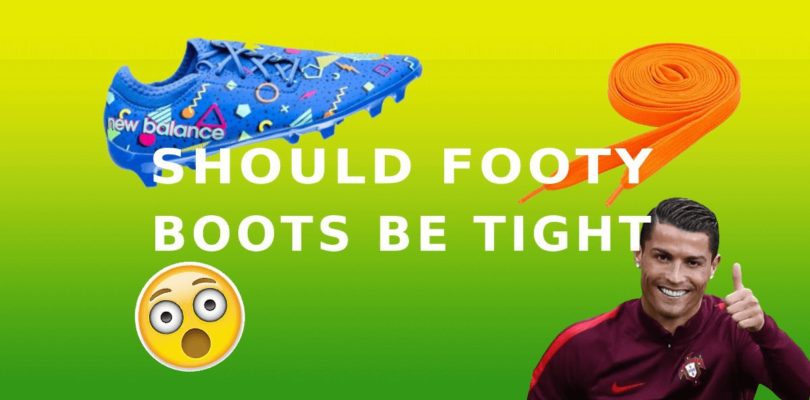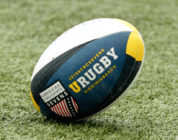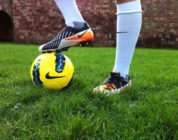We’ve all heard of the ‘wearing-in process’ when it comes to shoes, but given that you’re not going to be banging in goals from 40 yards in a nice pair of Brogues, does this same process apply to football boots? Are they meant to be tight, fitting nicely around your foot or should they be looser to give more space for your feet to breathe?
Are football boots meant to be tight? Here is your definitive answer.
Should Football Boots be Tight?
The quick answer as to whether football boots should be tight is that yes, they should be tight enough that your feet do not slip around in them, yet not too tight that your feet feel constricted or uncomfortable.
The longer answer to this question is that it depends on personal preference and playing style. Different boots are better for players in different positions.
| Position | Playing Style/Characteristic | Tight or Loose Boots |
| Goalkeeper | Passing Out From the Back | Tight |
| Long-range Passing | ||
| Clearances | ||
| Defender/Defensive Midfielder | Tackling | Loose |
| Slide Tackling | ||
| Midfielder/Winger | Dribbling | Tight |
| Close Control | ||
| Striker | Powerful Striking | Tight |
| Curled Shots |
For instance:
A dribbler would want their football boots to be… TIGHT
If you’re a winger, or a playmaker you want to lean towards tighter boots. This is because your game will be mostly orientated around dribbling and close touches. Therefore, tighter boots mean there will be less space between the sides of the boot and the foot. This allows for a closer touch when dribbling, or, for instance, when taking the ball down from the air.
A defender would want their football boots to be… LOOSER
If you’re a defender or player whose game is orientated around lots of tackling or plays involving collisions, it’s better to go for looser boots. We say looser because in our opinion, it’s not good to have very loose boots – just like it’s not good to have really tight boots either. But for defenders, looser boots allow for some movement of the foot within the boot. This means that when you’re going in for those crunching tackles, your foot will absorb less of the impact and it’s not as tight to the outside of the boot. If your boots are tight, your foot is going to feel more of the impact and will be at much greater risk of injury.
A striker would want their football boots to be… TIGHTER
For strikers or those of you that shoot often, it’s better to have tigher football boots. This is down to accuracy. If your boots are looser, it’s going to be more difficult to be accurate with your shots, as any movement of the foot in the boot could cause your shot to go slightly off course. A tight boot will give you more accuracy and mean the ball goes in the direction that you aim to shoot it at. **Of course, if you have the striking ability of a blind Emile Heskey, it might be better for your boots to alter the direction of your shot!
A goalkeeper would want their football boots to be… TIGHT
For all you budding Manuel Neuers out there, we assume you’re good with your hands. But nowadays, as you know, it’s important to also be good with your feet. Goalkeepers are required to have as good a ball skills as ever and what’s more, when they are required to kick the ball, it’s likely going to be in an areas of the pitch where the opposition is at the greatest risk of scoring – E.g. in the keeper’s own penalty box. Therefore, any mistake could potentially be critical. For this reason, it’s best goalkeepers wear tighter boots as there will be less chance of slipping. Tight boots will help them get a better connection with the ball and avoid those potentially goal-costing mistakes with their feet.
Check out the best football boots of 2024
FBG Personal Verdict

This is a Puma who knows how to wear football boots
The timing for writing this article is perfect as two months ago, I had a significant experience with boots. As the winter months came, I found myself playing on astroturf more frequently. We had a big cup game coming up and I felt like it was a good time to buy some new AG football boots (I don’t need much of an excuse to buy a new pair).
I went for something (that I thought would be) safe. Puma Fitness Black/Green colourway in blade form (AG). These were genuinely decent boots that I’d had before and found reliable, but this experience was not positive – **DISCLAIMER – for the most part, I’ve found Puma Football Boots very good and generally underrated.
The game kicked off and in a flash, we were down 2-0. I was playing defence and the team we were playing were passing it left, right and all over the place with intense off the ball movement. Long story short, I was finding myself changing direction frequently. To my dismay, I found my feet frequently slipping from the sole of the boot, as if they were not connected. With no laces on the Puma Fitness boots, I couldn’t tighten them either. We ended up losing that game 7-0 (okay, I probably can’t blame it on the boots), but after the game the soles of my feet were aching more than the pain in my heart from being thumped and dumped out of the cup. They strained for two days after, and it just shows how important it is to get boots that are tight enough to give you sufficient enough support from the sole.
Having said this, boots that are too tight will increase the risk of injury, with no leeway or buffer zone between your foot and your opponents’ tackle (or vice-versa). There is a sweet spot in between too tight and too loose that is crucial to find to optimise comfort.
Should I Buy Football Boots With or Without Laces?
A mere 15 years ago, this wouldn’t have been a question. And the old-school among us would hate the fact that is even a decision to make now. But as technology has advanced, so too have football boots, and now that evolution has included laceless designs.
So, in terms of comfort and how boots fit, should you buy football boots with or without laces?
Football Boots With Laces
For those of you that read my personal anecdote further up the page, you’ll not be surprised to hear that I’m a fan of boots with traditional laces. Call me a dinosaur, but that’s just me. There is nothing wrong with laceless boots – as long as you’re get the right type for your feet – but I like having the choice of tightening or loosening them to my will.
Advantages of football boots with laces
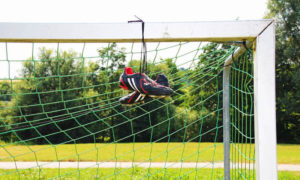
One advantage of laces that isn’t spoken about – hanging them on the goal for safe keeping
Adapt – Like I said, with laced football boots, you can tighten or loosen the boots around your foot in-game, based on how the boots feel around your feet.
Tighter Feel – With laces, you can get a much tighter feel around the foot than with laceless boots. If you buy boots half a size bigger, for example, you can counteract the oversized nature of the boots with a tightening of the laces.
Time Wasting – Most of us aren’t Premier League footballer, but time wasting (whether you like it or not) is a part of the game at all levels. Picture this; you’re playing your bitter rivals – you know, the ones with the nasty 7ft lumps at centre back, overly aggressive midfielder who loves leaving a foot in and tricky winger who doesn’t shutup all game, be it moaning at the ref for fouls that aren’t fouls or giving you banter everytime he gets past a player. You’re 1–0 up in the last minute and are about to take a throw in. If you have laceless boots, it’s a lot more likely you’re going fool the ref when you drop down to one knee and try to waste a few more valuable seconds re-tying the laces – and a lot more likely you’ll get a booking. It’s a small detail, but in today’s game something worth considering.
Football Boots Without Laces
Laceless boots certainly do have their place in today’s game, especially if you buy them with a tight-fitting ankle collar to fully lock-in your foot. There are certainly advantages to laceless boots, here are our thoughts.
Advantages of football boots without laces
Unimpaired Impact – Again, it might seem like a small detail, but when shooting or passing the ball with your laces, the actual laces won’t get in the way. Instead, you’ll make contact with the ball purely with the upper part of the boot, giving you a cleaner strike or contact with the ball.
No Distractions – While time wasting might not be an option with laceless boots, you also won’t have any distractions. We’ve all been there. When we feel something flicking our ankle or the rest of our boots (and I’m not talking about that aggressive midfielder leaving his foot in for challenges). All game, you won’t have to worry about laces coming undone and instead, can focus entirely on your play.
Lock-in Effect – This comes two-fold if you combine laceless boots with a decent, supportive ankle collar – with boots like the Nike Hypervenom Phantoms. These can provide the ultimate lock-in feel, so your boots give you extreme comfort that can optimise your play.
Should I Buy Football Boots a Size Bigger?
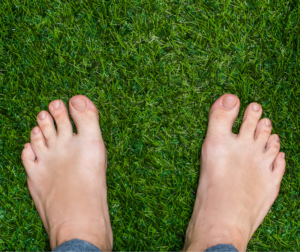
Let those feet breathe!
For the most part, no, you should not buy your football boots a size bigger. Sizes are there for a reason, so if you’re a size 10, you’re a size 10.
That being said, Nike have traditionally been slightly smaller than other brands, one being Adidas. This means if you’re a size 10 normally, size 10.5 might be a good option when buying Nike boots. I still think personally that buying a full size up is not the way to go, but it boils down to personal preference and can be measured on a case by case basis.
How Much Room Should You Have in Your Football Boots?
Like a lot of answers in this page, it does depend on a few factors. But in this section, we answer generally as to how much room you should have in your football boots.
In general, you should be able to wiggle your toes freely at the end of your boots. There should be the space of one finger at the end of the boots for your toes to move slightly. It’s more important for the base and sole of the boot to be tighter than the end of it. If the end of the boots are too tight, they will cramp your toes up and if you’re tackled face on, they can be crushed and will more likely to suffer an injury.
Also, when shooting with your laces, it might be painful if the toes are too cramped at the end of the boot.
Do Football Boots Get Looser Over Time?
Yes, football boots do get looser over time. From the time you unbox them to the time you’ve worn them a few times, they will get a little looser as they get worn in and more shaped to your feet. This is even more true when it comes to leather boots, as in time, they will conform around the shape of your foot.
Football Boot Tightness FAQs
Are boots supposed to be tight at first?
It’s more likely that boots will feel tighter at first, but as you wear them in, they will conform more to the shape of your foot and they’ll feel much more comfortable to wear. If the boots remain uncomfortable to wear after three or four wears, you should replace them with a better fit.
How much wiggle room should you have in boots?
There should be enough room in your boots for you to wiggle your toes.
How do I know if boots are too big?
Boots are too big if you feel slippage from the sole, or if there is more than a finger’s width room at the end of the boot.
Should your toes touch the end of your boots?
It’s okay if your toes gently touch the end of your football boots, but if they are completely locked in at the end, this is a sign to get bigger boots.
Do boots get looser as you wear them?
Yes, in general, most boots will get slightly looser the more you wear them. This won’t happen forever though, and after wearing them a few times they won’t likely get any looser.
Is it OK to wear tight boots?
Yes, for the reasons and in the circumstances listed above, it can be okay to wear tighter football boots. If, however, they are too tight and causing you discomfort or even pain after a couple of wears, this is a sign that they are too small.
Is heel slippage normal in boots?
Slippage is not normal in football boots, and if your feet are slipping in them this is a sign that you need to get tighter boots.
Do boots stretch when wet?
Generally, boots won’t stretch when wet. They might stretch to better fit your foot if they are, for example, made from leather, but this is not a direct result of being wet.

